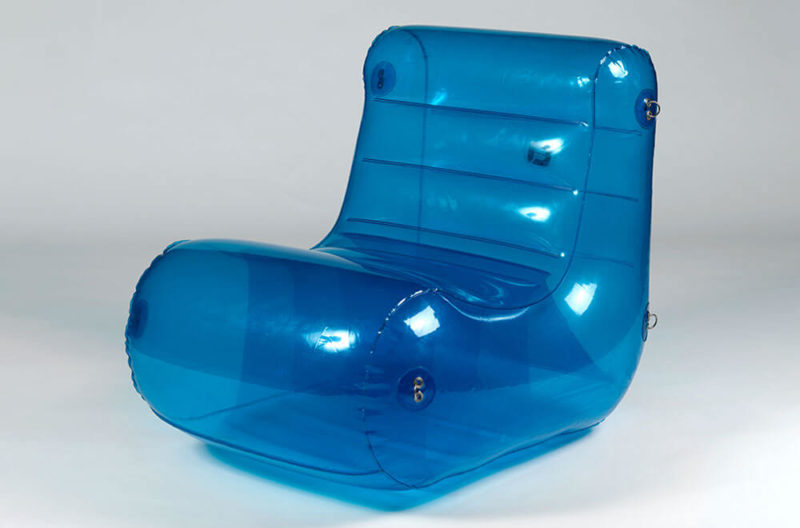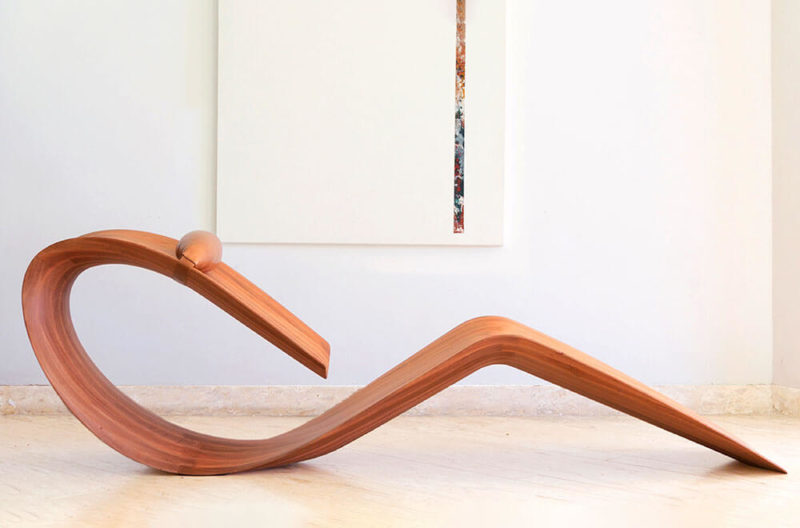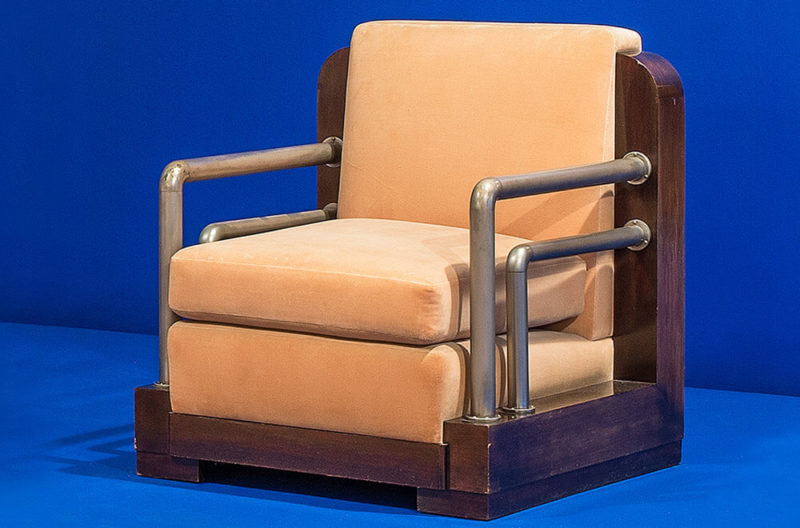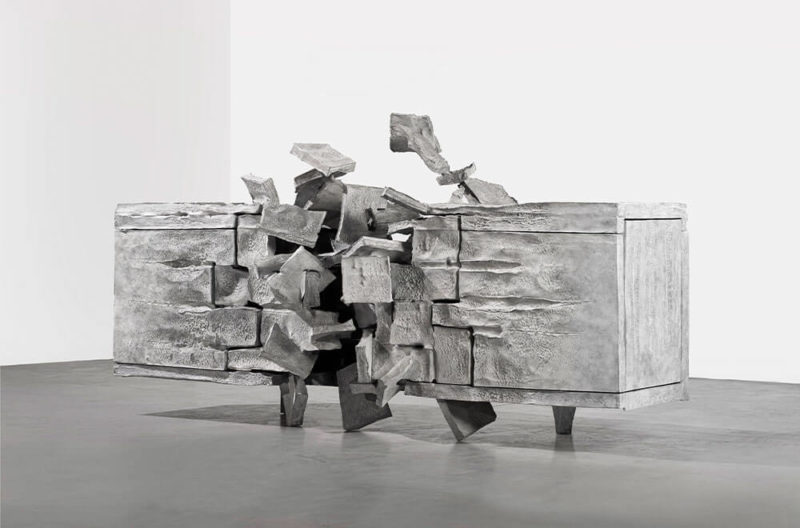‘Daybed’, 1937
Josef Hoffmann
![Josef Hoffmann, 'Daybed from the Boudoir d’une grande vedette [Boudoir for a Big Star]', Paris World’s Fair, 1937 COURTESY: © Nathan Murrell/MAK](https://thedesignedit.com/wp-content/uploads/2022/02/613-ootw-josef-hoffmann-daybed-2022-1.jpg)
Josef Hoffmann, ‘Daybed from the Boudoir d’une grande vedette [Boudoir for a Big Star]’, Paris World’s Fair, 1937
COURTESY: © Nathan Murrell/MAK
AT THE PARIS World’s Fair in 1937, Josef Hoffmann – a trailblazer of Viennese Modernism – exhibited ‘Boudoir d’une grande vedette’ (Boudoir for a Big Star). Epitomising elegance were a daybed and a chair both in gold, foliage-patterned fabric, with silver curving legs. A low glass table on a fluffy rug, a suspended lamp and encrusted wisteria lines running down ribboned walls completed the display. This boudoir has been reconstructed for the exhibition, ‘Josef Hoffmann: Progress Through Beauty’ at MAK – Museum of Applied Arts in Vienna.
Assembling more than one thousand exhibits, the retrospective showcases Hoffmann’s extensive output over his multi-disciplinary career. A prolific designer, architect, professor and curator, Hoffmann (1870–1956) designed everything from a sanatorium and mansion to furniture and porcelain, tea sets and cutlery, belt buckles, jewellery and even wallpaper. The exhibition was intended to mark the 150th anniversary of his birth but was postponed due to the pandemic.

Exhibition view
COURTESY: MAK
Born in Brtnice, now in the Czech Republic, in 1870, Hoffmann studied architecture at the Academy of Fine Arts in Vienna under Art Nouveau architect Otto Wagner. After setting up his own practice, he embraced sweeping curves in his early architectural designs. Then in 1897, he became a founding member of the Vienna Secession, a movement of avant-garde artists whose figurehead was Gustav Klimt.
Moving away from Art Nouveau, the Secessionists were influenced by the English and Scottish Arts and Crafts movement, including William Morris and Charles Rennie Mackintosh respectively. Mackintosh, who designed the Glasgow School of Art, was invited to show in the eighth Secession exhibition; his geometric motifs inspired Hoffmann’s striking use of black-and-white squares in Villa Moll, which he designed for his friends Carl Julius Rudolf Moll, a painter, and Koloman Moser, an artist and graphic designer. Hoffmann aimed for the “exterior [to] be in unity with the interior” to achieve an overall aesthetic identity. Hoffmann also reinterpreted the floral motifs created by Morris and Mackintosh in other projects.
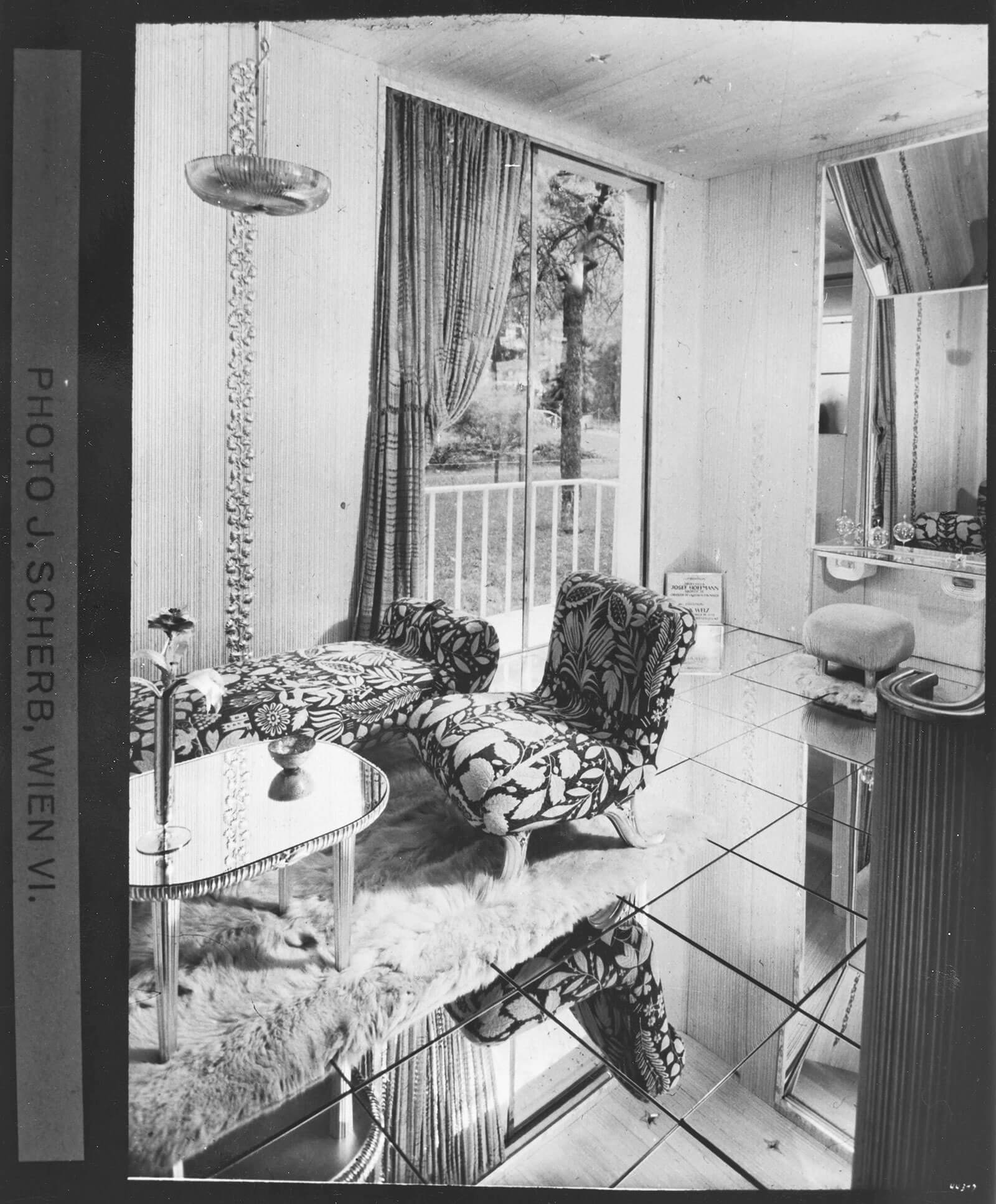
Reconstruction of ‘Boudoir for a Big Star’
COURTESY: MAK
In 1903, Hoffmann and Moser, with financial support from the Jewish textile industrialist Fritz Wärndorfer, established the Wiener Werkstätte – meaning Vienna Workshop. With a focus on beauty and quality, this production community of visual artists and craftsmen took a holistic approach towards unifying the multiple facets of arts and crafts in everyday life. For Hoffmann, ushering in a modern style was akin to social progress.
The embodiment of this Gesamtkunstwerk (total work of art) philosophy was Palais Stoclet in Brussels, designed by Hoffmann, completed in 1911, and, since 2009, inscribed on UNESCO’s World Heritage List.
The Wiener Werkstätte disbanded in 1932. A year later, Hoffmann and Robert Kramreiter designed the Austrian Pavilion in the gardens of the Venice Biennale, which was inaugurated in 1934 and brought Hoffmann further international recognition.
Hoffmann’s legacy as an influential tastemaker is traced through MAK’s exhibition. The ‘Boudoir d’une grande vedette’, with its characterful flourishes and bold patterns, expresses all the confidence of a recognised master.




